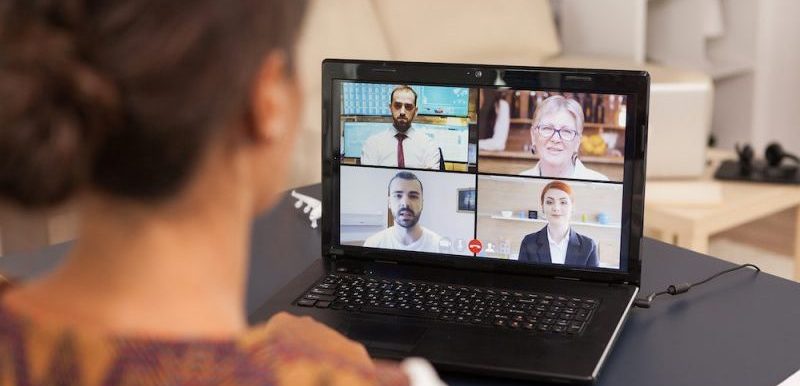At the intersection of all types of reforms we cover in this guide — people, technology, innovations and budgets — lies one that has reimagined what it means to communicate: videoconferencing.
Indeed, when agency offices temporarily closed nearly two years ago, employees who knew little about their laptop cameras suddenly became webinar proficionados. They scheduled video meetings, learned to read body language from the chest up, and got a peek into coworkers’ home lives.
And many agencies discovered that video technology not only made remote work a viable long-term option, but it allowed organizations to expand their customer services in a forward-looking, energized way — akin to what the private sector often provides.
“Customers are really looking for proactive engagement in real time,” said Leo Martinez with Zoom, a provider of video conferencing solutions. “That’s one of the biggest reasons why, in [talking about] modernization, governments need to stay abreast of technologies.”
Many features to choose
Remaining up-to-date can help organizations reach often-ignored communities. “We’re now seeing engagement from our agency customers where they’re requesting features such as closed captioning, such as ASL [American Sign Language] and other options to support people with disabilities,” he said.
Organizations also use the Zoom platform to make process and efficiency improvements, with tools such as team chats, streamlined calendars, and recording and transcription. Options including shared screens, co-annotation of documents in real time, and the ability to view dozens of participants simultaneously further enhance collaboration.
Funding and cybersecurity
Martinez said organizations face two hurdles when considering video conferencing services. The most significant issue is funding, although agencies recently have used federal dollars — including resources from the CARES Act and the new infrastructure law — to support their modernization.
The second issue is cybersecurity, and public-sector organizations have unique requirements. Zoom provides a separate platform for government entities — distinct from what personal and commercial users can access — that complies with FedRAMP and Defense Department requirements. Only U.S. persons manage the government platform.
Case studies
When the pandemic began, the city of San Jose, California, lacked means to establish and maintain a remote workforce and offer certain constituent services. Martinez explained that the city initially used Zoom only for its digital meetings app but later took advantage of Zoom’s cloud phone system as well.
In addition, Zoom helped San Jose stand up its emergency operations centers and provide language translation services to a diverse public.
In Kansas, the Department of Corrections combined the Zoom platform with existing department technology to offer new professional development opportunities — including Master of Data Science certificates — for female inmates. According to Martinez, officials harnessed CARES Act funding, and the warden (working remotely) helped implement the program.
Takeaway: We need to be more proactive now, to be in constant, active engagement with our end users. We need to find a way to avoid inertia or complacency.
This article is an excerpt from GovLoop’s guide “Turning Vision Into Reality: How Agencies Can Forever Improve.” Download the full guide here.






Leave a Reply
You must be logged in to post a comment.